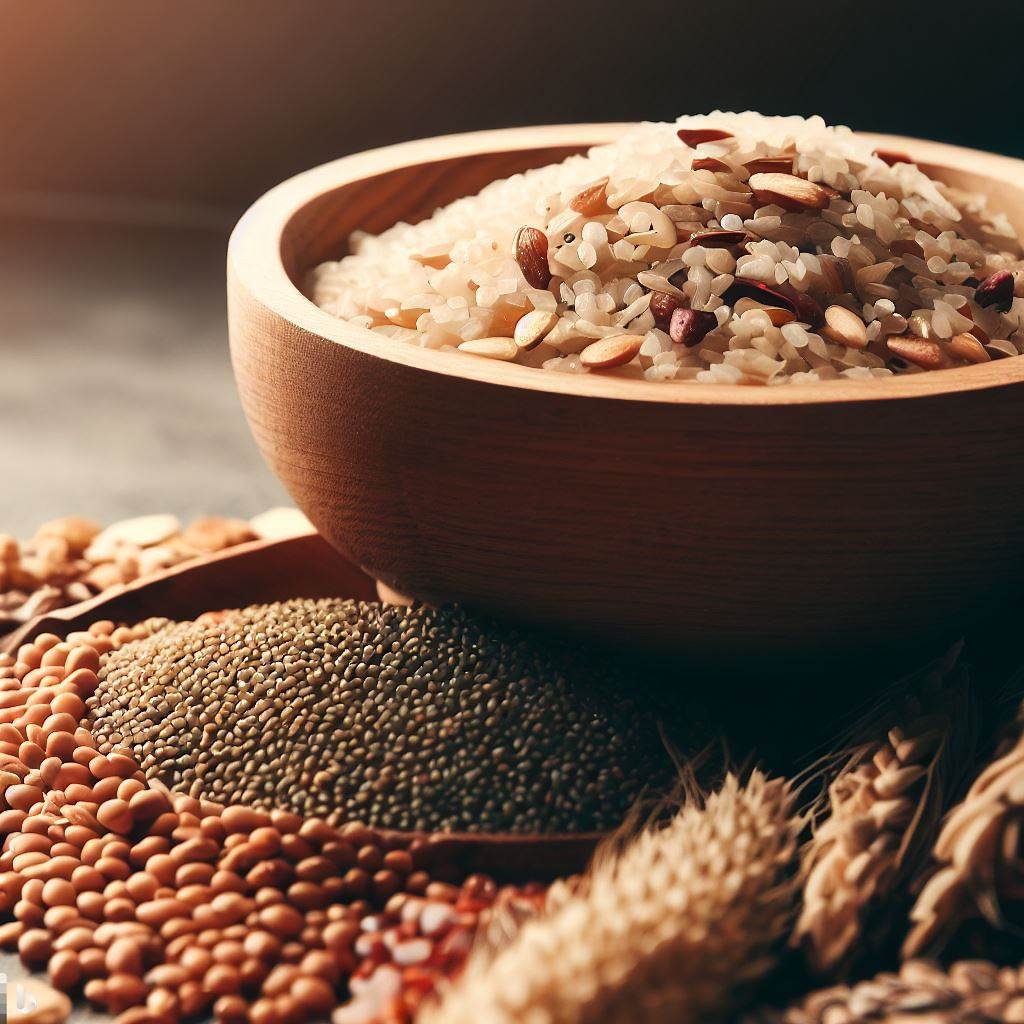Grains are a blessing for bird owners. They are that rare combination of a nutritious food which birds also love to eat! There are many varieties of grains, each providing somewhat different nutritional values. As a group they are low in fat and packed with proteins, complex carbohydrates, vitamins and minerals. And prepared properly, birds love the taste. Use grains along with pellets, seed mixes, veggies, pasta, etc to increase the variety in their diet.
I have included a great run-down on the various grains plus cooking instructions for each. I use all organically grown grains from the health food store and add pasta, veggies, nuts, beans.It’s great and the birds just love it. I sometimes take a baggie full for the bird club raffle table (it is often the first to go). A friend has a macaw who is a dumper of EVERYthing. He tasted the grains mix and never raised his head until the bowl was empty. Now, he checks the bowl and if it’s the grains mixture, he NEVER dumps the bowl until he’s eaten it all.
GRAINS
PEARLED BARLEY
A cup of cooked barley offers the same amount of protein as a glass of milk, along with hearty increments of niacin, thiamine, and potassium. A substance that inhibits cholesterol production in the blood has been traced to the nonfiberous portion of the grain.
TO COOK PEARLED BARLEY
Use 2 cups boiling liquid to 1 cup pearled barley, cover and cook for 35 to 40 minutes.
BUCKWHEAT GROATS
The proteins in buckwheat are the best known source of complex carbohydrates. Buckwheat also contains a high proportion of all eight amino acids which the body does not manufacture but are nonetheless deemed absolutely essential for keeping it in tiptop shape. All this makes buckwheat closer to being a complete protein than any other plant source – even soybeans!
TO COOK BUCKWHEAT GROATS
Use 2 measures liquid to 1 measure of buckwheat groats, bring to a boil, cover, and simmer for about 20 minutes.
BULGAR
Each quarter pound contains over 11.2 grams of protein, 75.7 grams of carbohydrates, 338 milligrams of phosphorus, and 229 milligrams of potassium, as well as healthy doses of calcium, iron, thiamine, riboflavin, and niacin. Or as many nutrients as one will find in a whole loaf of 100% whole-wheat bread! Freeze unused bulgar.
TO COOK BULGAR
1 measure of bulgar to 2 measures liquid. Bring to a boil, lower heat, cover, and simmer for about 20-25 minutes.
HULLED MILLET
Rich in phosphorus, iron, calcium, riboflavin, the nutritional value of cooked millet (90 calories) is only a step below wheat on the protein ladder. It is also higher in the amino acid lysine than rice, corn, or oats.
TO COOK MILLET
Use 1 measure of millet to 2 measures of liquid, bring to a boil, lower heat, cover and simmer for 20 minutes. Allow to stand, covered, off heat for additional 10 minutes.
WHEAT BERRIES
High in protein, carbohydrates, B vitamins, and 7 amino acids that provide the body with energy: 335 units of protein per cooked half cup. And low in calories: 55 for the same amount.
TO COOK WHEAT BERRIES
Soak overnight and boil in soaking water for 50 to 60 minutes or cook covered until the wheat is soft, adding water as necessary.
QUINOA
Jam-packed with lysine and healthy amounts of the other amino acids that make a protein complete, besides being a repository for phosphorus, calcium, iron, vitamin E, and assorted B vitamins. Store in freezer.
TO COOK QUINOA
1 measure of quinoa to 2 measures of liquid. Bring to boil, lower heat, cover and cook for 15 minutes. Allow to stand, off heat, for another 10 minutes.
TRITICALE
A hybrid grain of wheat and rye. The average protein content of wheat is about 12%, rye’s is lower, about 7%; triticale runs about 15-17%. Triticale contains a better balance of amino acids than either of its parents, with twice as much lysine as wheat offers in every spoonful.
TO COOK TRITICALE
Water to cover triticale, bring to a boil, lower heat, cover and cook until done; adding water as needed.
There are as many ways to serve the grains to your birds as there are people to devise them. The following is a recipe which I use. It combines grains with pasta and vegetables. The grains and veggies can be varied. Experiment to find the combinations which work for you!
GRAINS, PASTA, & VEGGIE MIX
1 cup of several different grains. Cook separately so there will be many flavors.
1 cup cooked pasta (orzo) – roughly chop several hot peppers into cooking water.
1 cup brown rice – cook with 1 tablespoon of cinnamon.
Add several of the following:
- Broccoli – steamed lightly and chopped
- Small bag of frozen sweet peas – don’t thaw
- Small bag frozen sweet corn – don’t thaw
- Toasted sunflower kernels
- Chopped nuts
- Dried cranberries, blueberries, cherries
mango, papaya or other dried fruits chopped - A variety of beans cooked separately, seasoned with a head of garlic chopped or a handful of green or red hot peppers roughly chopped
Use about 2 tablespoons for bigger birds, and about 1 tablespoon for conures or cockatiels. Package into baggies in 3 day portions, about the maximum time it is safe in the refirigerator. Remaining baggies can be stored frozen for an indefinite period.

